A board game 'Spell Book of Evening and Dawn' play review where you collect materials to develop spell books and familiars in order to become the strongest magician

Hobby Japan released the Japanese version of the board game ' Spell Book of Evening and Dawn ' in September 2023. The game aims to be the strongest magician at the annual ceremony, collect material (materia), complete spellbooks, and summon familiars. 'The core of the game is easy to play and simple, but also has high strategic and replayability,' so four GIGAZINE editorial staff actually played it.
Spell Book of Evening and Dawn | ANALOG GAME INDEX
The package for 'Spell Book of Evening and Dawn' looks like this.
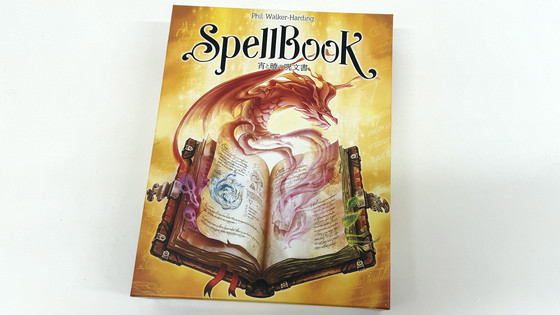
The gameplay time is 45 minutes, the target age is 12 years and above, and the number of players is 1 to 4.

When you open the box, you'll find a rules manual. It's designed to look like the cover of an old magic book.
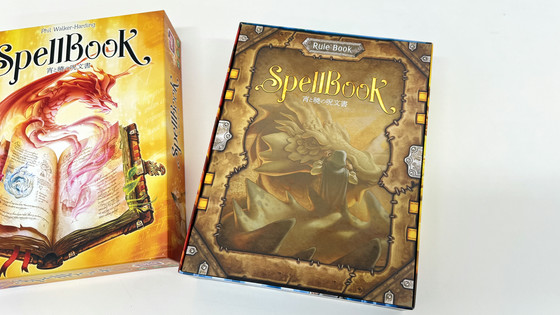
The game boards are made of cardboard and can be easily removed without the use of a cutter.
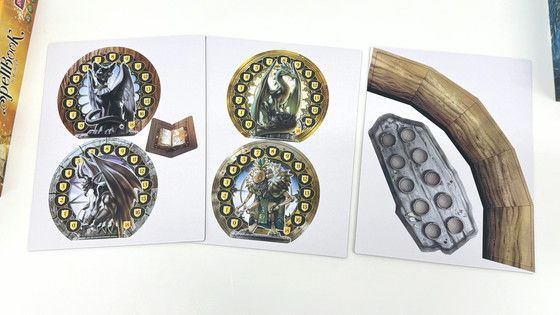
The trash can used during the game needs to be assembled. It requires a piece of tape to secure it in place.
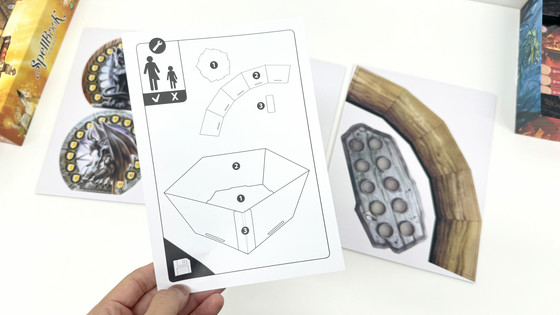
Once assembled, it looks like this. It has a pentagonal barrel-like design.
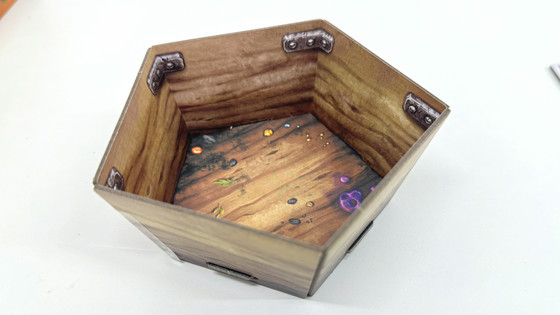
Familiar board, altar board, and starting player token.
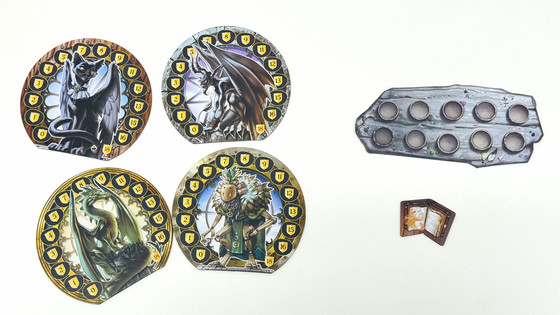
Pawn token and Maelstrom Sack.
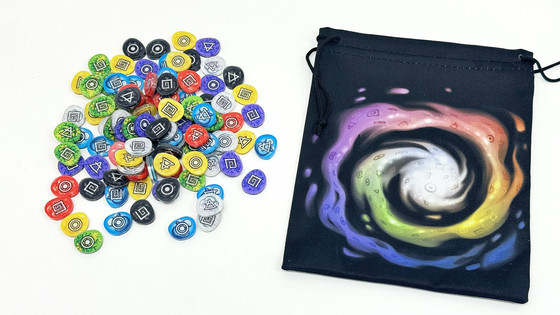
There are 105 pawn tokens in total, 5 of each of 7 colors and 3 types.
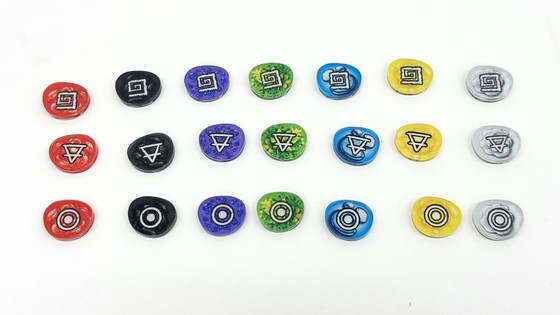
There are 84 spell cards in total, 12 of each of 7 colors.
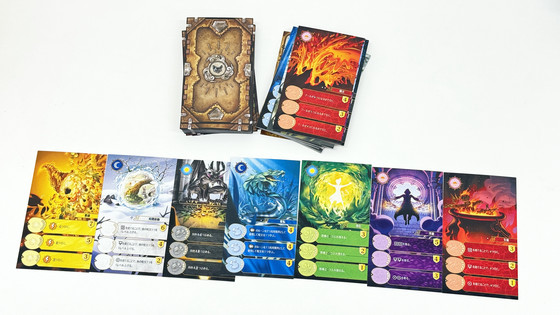
There are three types of spell cards: level 1, level 2, and level 3. The number of stars in the center of the card indicates this. Below is a level 1 card.
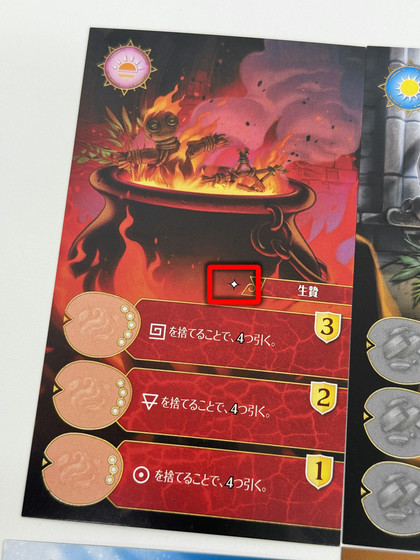
The spell card for level 1 looks like this. The one on the bottom right is a summary card that summarizes the progress of the game, and there are four in total.

Level 2 spell cards. They are the same color as level 1 spell cards, but the illustrations and effects are different.

And here are the level 3 spell cards. I recommend separating your spell cards by level.

The contents can be stored neatly in the box as shown below.
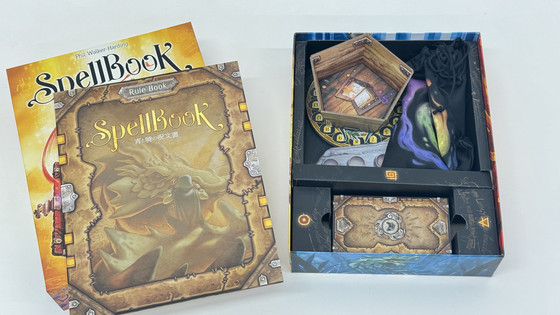
First, prepare the game. Place the trash box, altar board, and Maelstrom bag on the table. Place five pawn tokens on the altar board and put the rest in the Maelstrom bag.

Distribute seven spell cards, a summary card, and a familiar board to each player. In addition, it is recommended to play with level 1 spell cards for the first time, so this time I will play with level 1 spell cards. Now the game is ready.
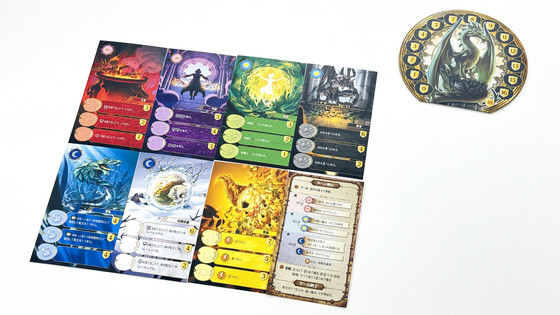
The game starts with the start player, and each player takes their turn. The turn progresses through three phases: 'Morning', 'Day', and 'Night'. When someone creates all seven spellbooks or completes the familiar board, the game ends in that round. The person with the most victory points wins.
In the 'Morning' phase, you can either 'take one pawn of your choice from the altar board' or 'take two pawns at random from the Maelstrom Bag.' You can keep the pawns you get, but be careful because you can only hold a maximum of nine.

During the 'Day' phase, you can place one pawn from the ones you have on the familiar board. Of course, you can also choose not to place one. The familiar board has spaces with numbers written on them, and you arrange the pawns in order from smallest to largest. When you place all the pawns up to the square with '16' written on it, the game ends for that round.

In the 'Night' phase, you can learn spells by placing materials in your spellbook. There are three levels of spells written in the spellbook, from the bottom up: level 3, level 4, and level 5. To learn a spell, you need to pay a number of materials equal to the level. For example, the image below shows a spell in a red spellbook that has been learned. To learn the lowest level 3 spell, you need to pay three red materials. Place one of the three red materials in your hand on the space in the spellbook.

The remaining two pawns go in the discard bin.
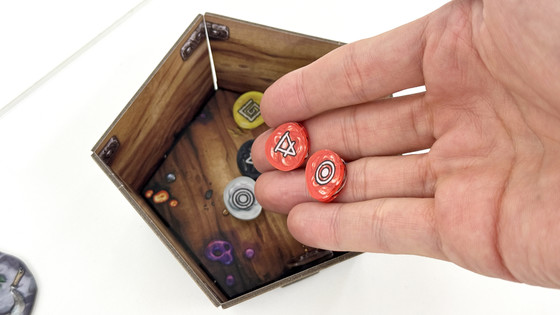
Only one spell can be learned in a spellbook. However, if you learn a higher level spell, you can also use lower level spells. In other words, low level spells are easy to learn because they cost less, but they have weaker effects, while high level spells are expensive and difficult to learn, but they have stronger effects. The number on the yellow shield icon on the far right is your victory points.
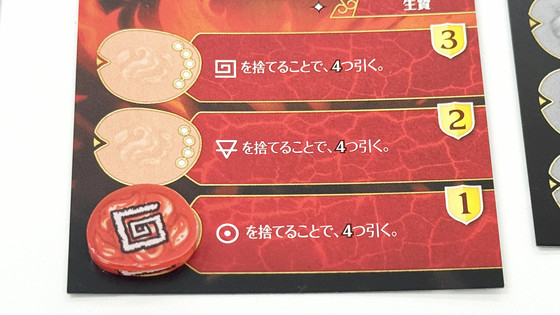
Also, if you really don't have enough pawns of the same color, you can collect three of the same 'rune' marks on the pawns and count them as one pawn of any color. For example, in the following example, you want to learn a level 4 spell with a blue spellbook. To do this, you need to pay four blue pawns, but you can pay with three blue pawns plus three pawns with '◎' runes.
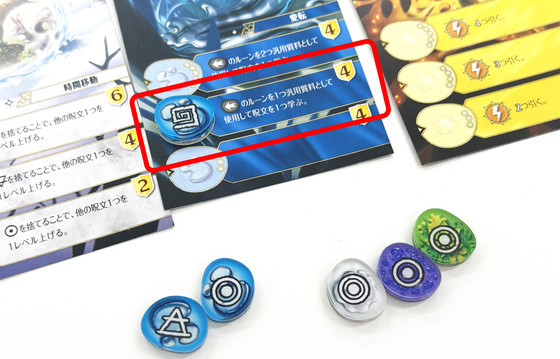
When the 'Night' phase ends, the materials drawn from the Maelstrom Sack are replenished to the Altar. When there are less than 5 materials on the Altar, one is added to the Altar until there are 5; when there are 5-9 materials, one is added; when there are 10 materials, all materials are discarded in the trash box and 5 are added.
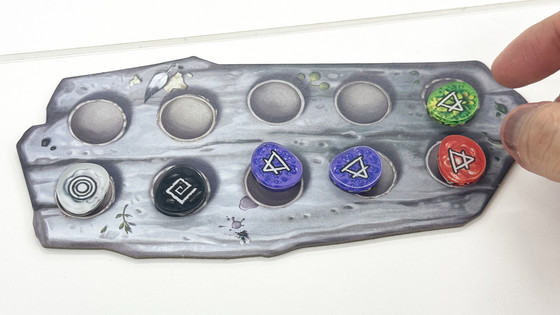
When the 'Morning', 'Day', and 'Night' phases are over, the turn passes to the player on your left.
During the round, you can use the spells you have learned instead of the actions of 'morning,' 'daytime,' and 'night.' For example, the spells in the following red spellbook can be used in the 'morning,' as you can see by looking at the icon in the upper left.
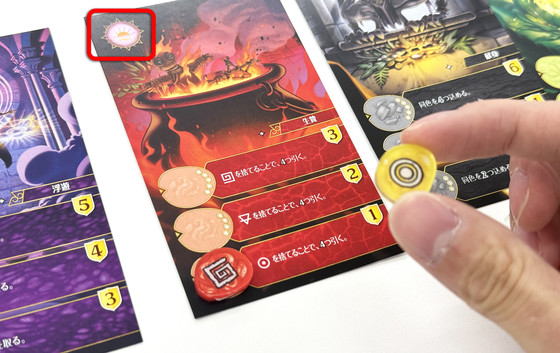
The effect is that you can discard one pawn of the specified rune and in exchange draw four new pawns.
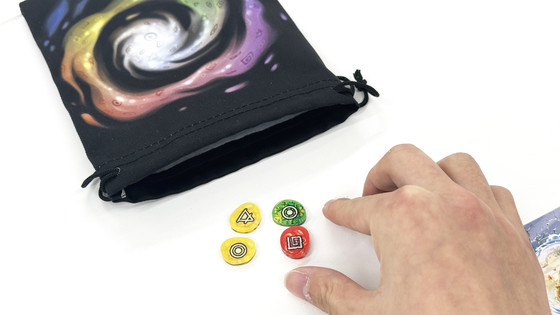
The spells in the green spellbook can be used during the day. You can swap the materials in your hand with the materials on the altar.
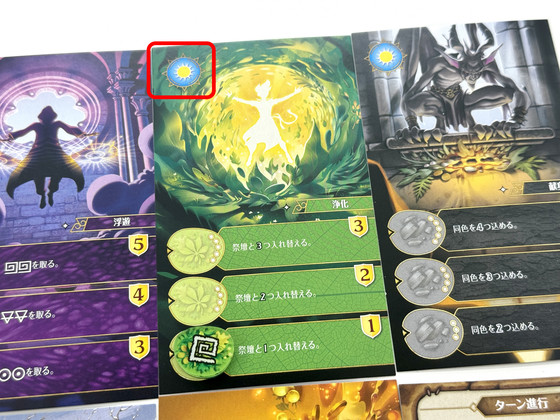
The white spellbook allows you to learn spells that can be used at night. By discarding the specified rune material, you can raise the level of one other spell by one. Once you have learned a spellbook, you cannot relearn higher-level spells, but by using this white spell, your spells will become more powerful.

The white spell that leveled up was the blue spell 'You can consider one rune material of the same color as the material you placed as a material of any color.' Using this blue spell, I was able to learn the yellow spell book with high victory points. It is very important to accelerate the learning of spells and earn victory points by combining the effects of spells like this.

On the other hand, the starting player took advantage of the fact that he was the first to move, and steadily placed pawns on the familiar board. The game ended when the last player had placed a pawn.

When the last player has finished playing, the points are calculated. The player who chose to pour material into the familiars won the game, scoring 18 points for the familiar board plus 14 points for the spells he had learned over time, for a total of 32 points. The first time we played, we had to confirm the rules as we went along, so it took about an hour and a half.
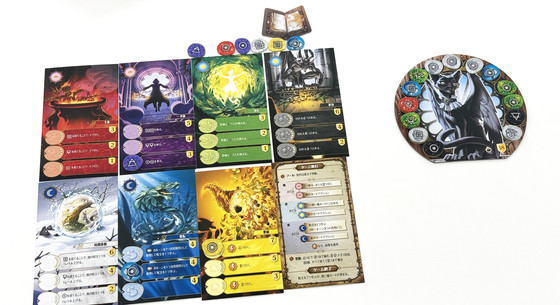
Next time I'll try playing with the level 2 set.
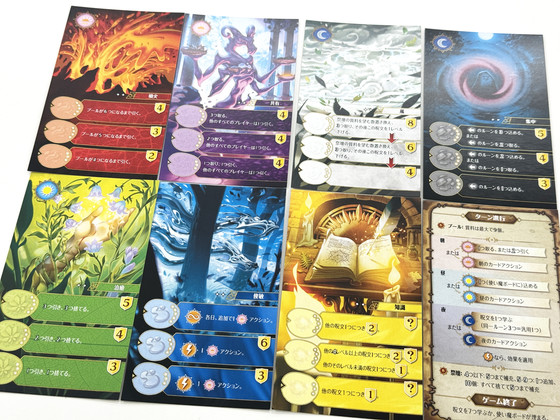
The starting player, having learned the strength of familiars in the previous game, adopts a strategy of 'actively throwing materials at familiars.'
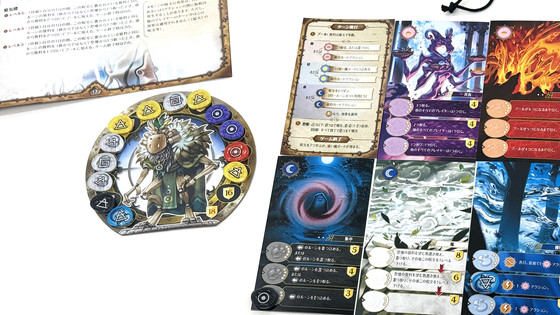
Level 2 spellbooks have completely different effects and names from level 1, making them more powerful and technical. For example, the purple spell below can be cast in the morning, and instead of getting any material from the altar, you can have each player other than yourself draw one material from the Maelstrom Bag.
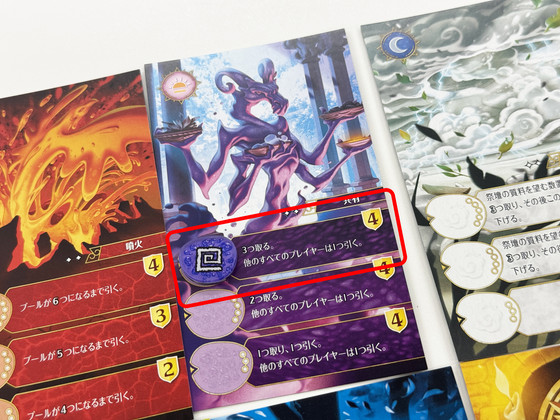
Get 3 materials of your choice from the altar. You can learn level 3 of a spell with 3 of the same color, so this purple spell can further accelerate your spell learning, making it very powerful.
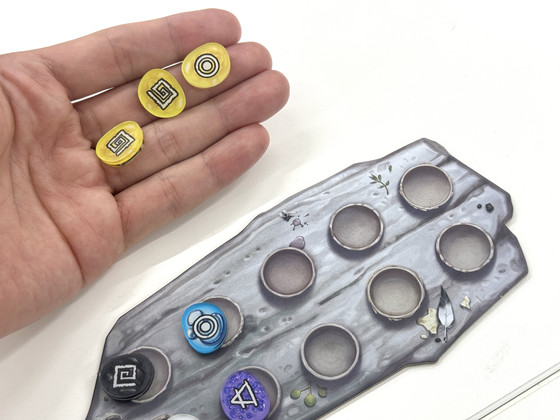
The second time, I remembered the rules, so it went much quicker than the first time, and the first player filled up the familiar board and the game ended in about an hour. The familiar board had 18 points, the spell book had 13 points, and the total score was 31 points, which was a significant increase in victory points.
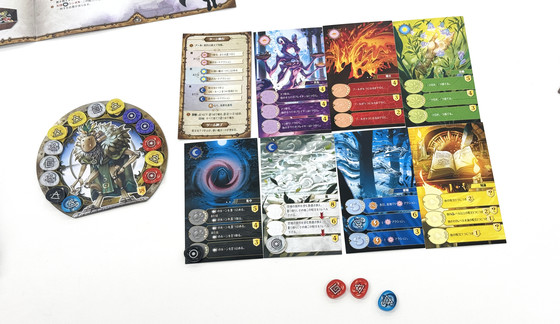
However, the player who won was the one who actively learned the higher-level spells. Because the yellow spell level 5 had the effect of '2 victory points for each spell book of another color learned,' the player earned 28 victory points just from the spell books. In addition, the player won with a total of 35 points by adding the 7 points from the familiar board.
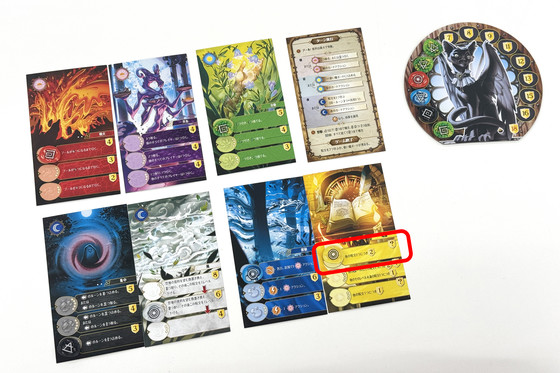
'Spell Book of Dusk and Dawn' is a game in which you acquire material in the 'morning', accumulate material in the 'day', and learn spells and power up in the 'night'. The rules are easy to remember even for people who are not familiar with board games. All of the information of each player is visible to the other players, so you are required to plan a strategy with an eye to the future, and there is an element of luck in the part where you draw material from the Maelstrom Bag. The game has simple rules but a deep gameplay that is appealing. In addition to the wide range of strategies, the game's development changes greatly depending on the combination of cards, so it has high replayability and I felt that it was a game that you would never get bored of playing no matter how many times you played it.
The suggested retail price for 'Spell Book of Evening and Dawn' is 6,600 yen including tax. It is also available on Amazon.co.jp, but was out of stock at the time of writing.
Amazon | Hobby Japan Spell Book of Evening and Dawn Japanese Version (1-4 players, 45 minutes, ages 12 and up) Board Games | Board Games | Toys
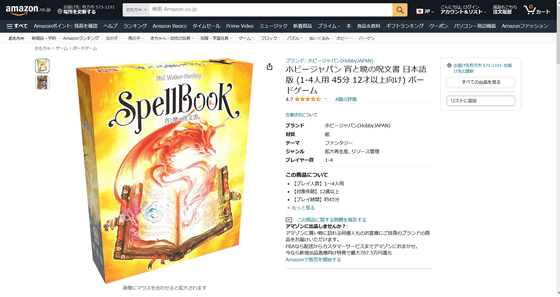
Related Posts:







